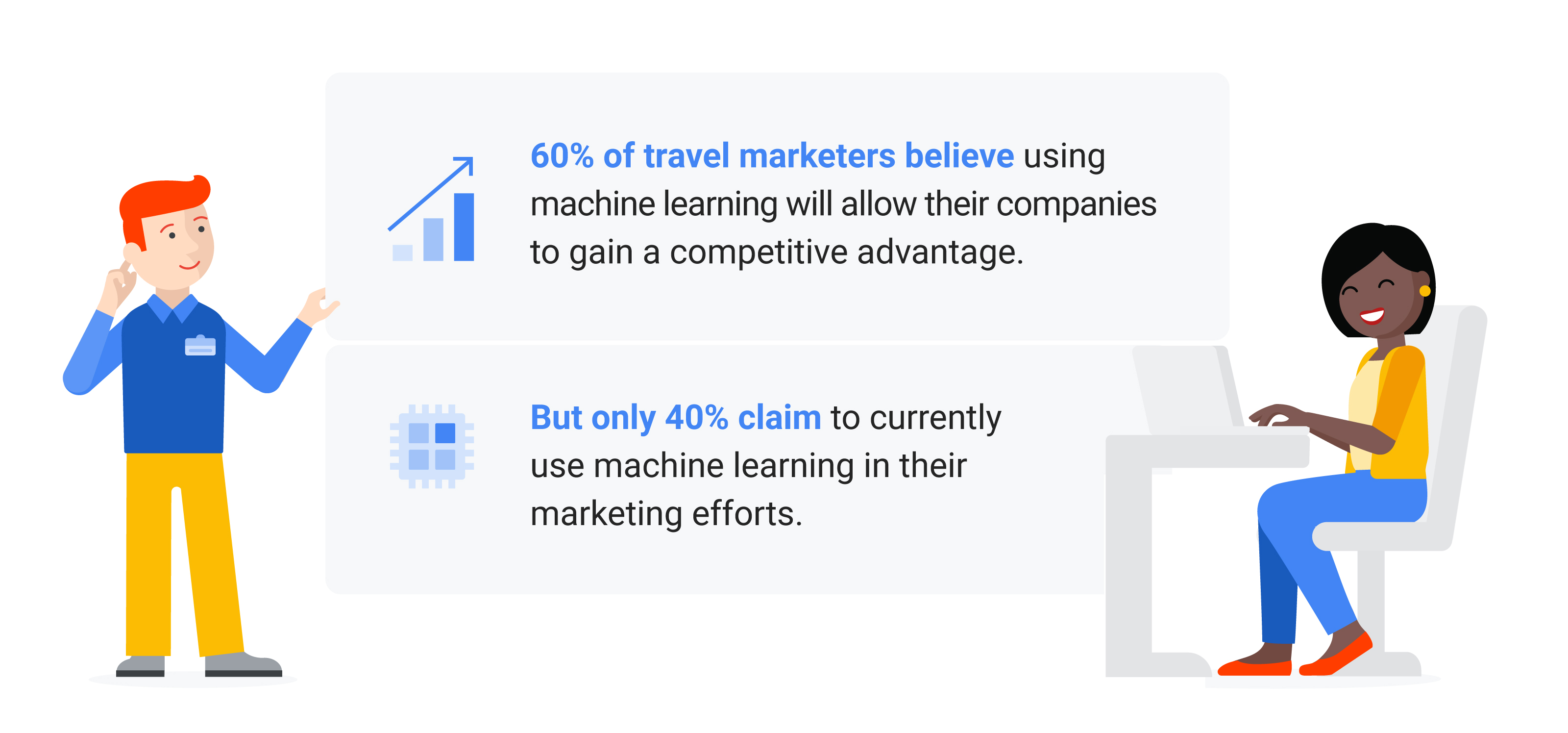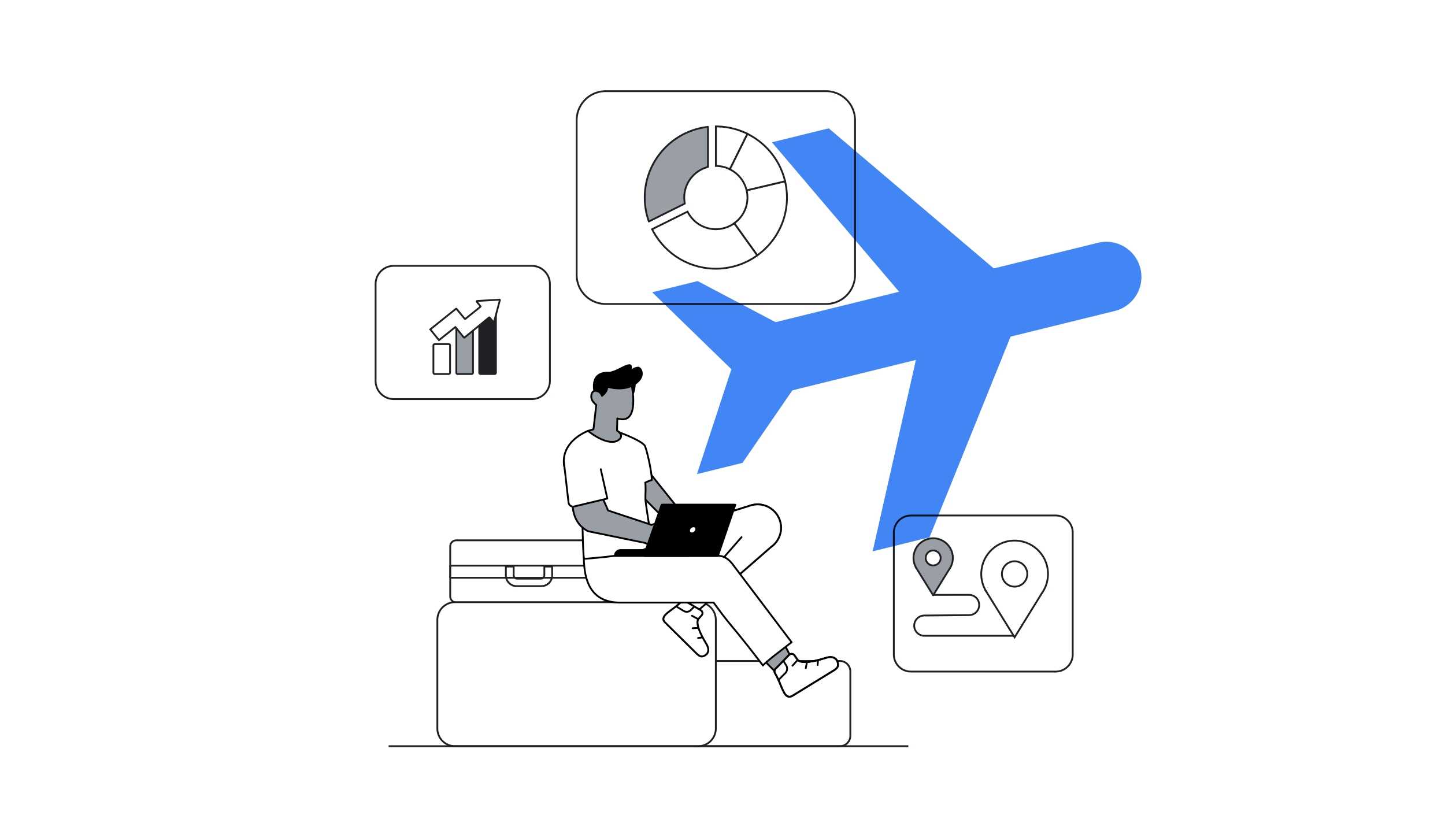Digital brings more complexity – and opportunity – to marketing than ever before. In the travel industry, where people frequently take weeks or months to research the perfect trip, it’s easy to be overwhelmed as a marketer. In a recent study, we found that one traveller engaged in over 500 different digital touch points during her research for a flight for an upcoming trip. In searching a variety of topics, from “cheap flights to Dublin from Dulles” to “how do I get my boarding pass online”, the range of activities and presumed intent was wide. How can a marketer keep up with this type of activity?
Fortunately, insights, machine learning and automation give brands an opportunity to make some sense of the digital chaos – to not only work in smarter ways, but to drive measurable business outcomes through marketing.
In my 20 years in the travel industry, I’ve seen huge shifts in consumer behaviour. And the number of channels we can use to reach those consumers is multiplying. As a result, our approach to data and measurement must change. And we must work to understand the very real benefits of machine learning to our businesses.
Here are three questions every marketer should be asking themselves as they navigate these changes.
1. Have you unified your data sources?
Relative to other industries, travel marketers have the ability to connect more deeply with people by having a better sense of who they are through data: How many business trips did someone take in the past year? How many kids do they have? Do they have a specific room type or amenity preference at a hotel? How do preferences among loyal members differ from those of new customers?
Connecting your systems and organising sources of information can help you identify valuable insights about your customers and better respond to their needs.
Connecting your systems and organising sources of information can help you identify valuable insights about your customers and better respond to their needs. Travel brands should start small. Align your internal data sources (such as email campaigns and loyalty programmes), then incorporate relevant third-party data (such as intent-driven audience signals from search or video) into your systems. This isn’t an easy task, but the right insights can help you deliver more impact messages and content to travellers at the right time.
That type of approach has helped fuel Priceline’s business strategy. “The more we can align our customer data sources, the better,” said Toby Korner, VP of marketing analytics at Priceline. “This allows us to automate reports on the metrics we value as business health indicators. We can then spend more time concentrating on new campaigns, new channels or new product opportunities.”
2. Are you measuring what matters?
Travel brands should have a business-driven metric for every marketing initiative. Aligning to C-level objectives – such as bookings, revenue, gross margin or profit – ensures that internal teams are aligned to a common goal and not independent success metrics and incentives.
Rather than anchoring to specific KPIs, orient your marketing objectives around business growth so that you focus on the metrics that matter.
In a perfect world, we would be able to directly tie all of our marketing activities across the entire customer journey to business outcomes. In reality, the digital measurement and attribution landscape is constantly evolving, and the metrics that inform growth today are not guaranteed to be aligned with business outcomes tomorrow. So rather than anchoring to specific KPIs, orient your marketing objectives around business growth so that you focus on the metrics that matter.
Priceline’s Korner agrees. “We try to focus on creating and driving the metrics that matter to our business,” he said. “Some metrics lose relevance over time and can change depending on our business objectives. We revisit metrics frequently to determine two things: 1. Does it have a downstream impact on our top or bottom line? And 2. Does it help the customer? If a metric doesn’t meet either of these requirements, it is not nearly as important to us.”
3. Are you automating with machine learning?
Once you have a sense of the data and goals that matter to your business, machine learning can help you find your most qualified audiences at scale. Some customers have higher value to your business than others (a repeat business traveller versus a one-time leisure traveller), and automation can help you engage the most profitable travellers in a cost-efficient way. Most travel marketers believe that machine learning can help unlock opportunities for their business, but may not consistently be putting that belief into practice; 60% of travel marketers believe using machine learning will allow their companies to gain a competitive advantage, but only 40% of marketers in the travel industry claim to currently use machine learning in their marketing efforts.1

By applying machine learning and leaning into an innovative approach to insights, marketing and attribution, car hire company Hertz was able to drive results for its business. First they used data to better understand the value of certain customer segments. Then, by incorporating audience targeting and automation in their marketing campaigns, Hertz was able to increase reservations by 10%.
While traveller behaviour and our industry continue to evolve, I’m more optimistic than ever about the opportunity for travel brands to position marketing as a key driver of growth.






